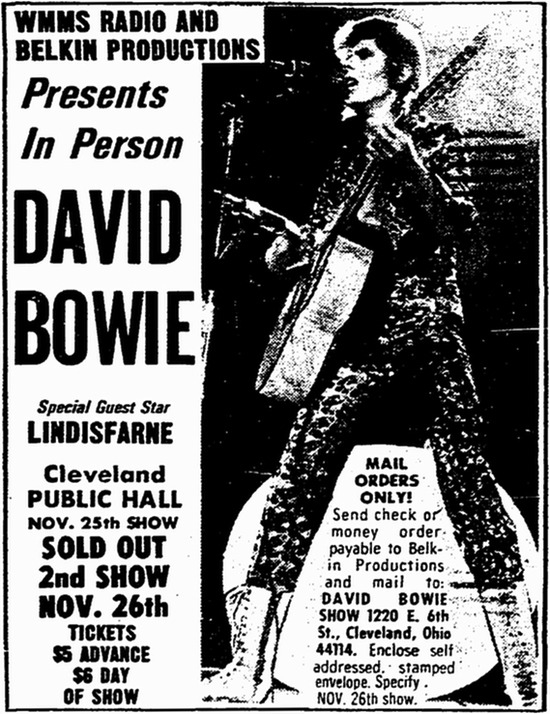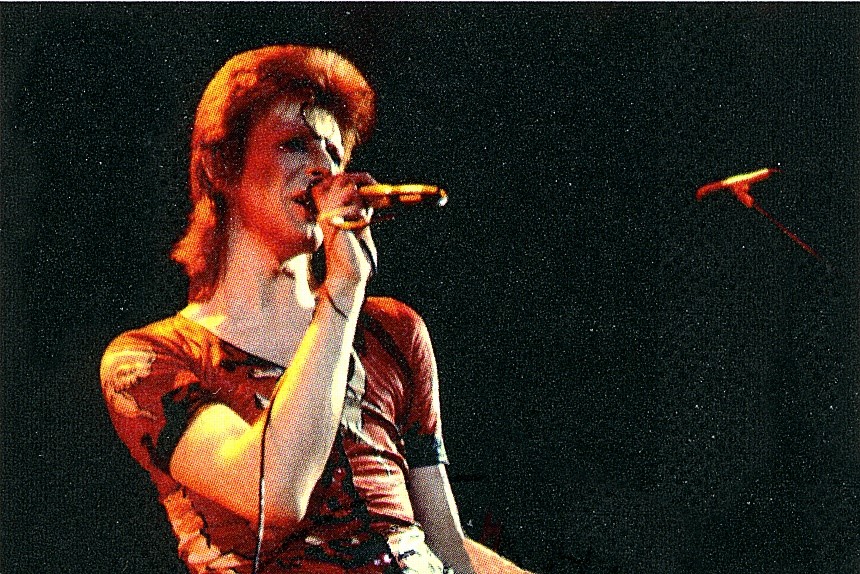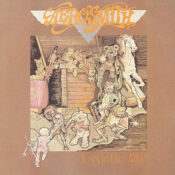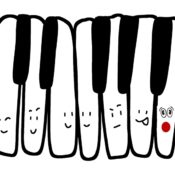Fifty years ago today, a lithe, pale-faced alien touched down onto the British rock scene and changed it forever. When David Bowie released his seminal record, The Rise and Fall of Ziggy Stardust and the Spiders from Mars, on June 16, 1972, he also let loose Ziggy Stardust, the first of multiple characters he would morph into in his career.
The Rise and Fall of Ziggy Stardust and the Spiders from Mars was Bowie’s fifth album. Ten years of music-making preceded it, in which Bowie struggled to find a wide audience. His self-titled first record is unremembered by the masses. His second, Space Oddity, boasts one of Bowie’s best-known songs, but didn’t make him famous. His third, The Man Who Sold the World, was a turn away from folk, but unsuccessful in its time. His fourth, Hunky Dory, brought us “Changes,” “Life on Mars,” and “Oh! You Pretty Things.” It was met with critical acclaim, but no publicity. Ziggy Stardust is remembered today as one of the best albums of the Glam Rock era. Though the quality of its music — especially the guitar-playing of band member and “Spider” Mick Ronson — did not make Bowie famous alone. The character of Ziggy Stardust, and his foreign, androgynous appeal, was who made Bowie a superstar.
Before Ziggy, Bowie studied performance art under the tutelage of mentor and lover Lindsay Kemp, a master of mime, costume, and dance. They met when Kemp used one of Bowie’s songs in his act, and Bowie saw the show. They began meeting for dance lessons soon after.
Kemp told CBC in 2015, “Just before I met David, he was planning on giving up music altogether. I mean, he was feeling very disillusioned.” Lindsay Kemp’s circus-like world pulled Bowie in and gave him new inspiration. He was a diligent student of Kemp’s and stuck with dance and theatrical arts. This partnership was essential to the creation of Ziggy, who is an amalgamation of rock ’n’ roll, theatre, circus, and mime.
Ziggy Stardust, Bowie’s creation, is an alien rock star who arrives on Earth at the moment of its impending doom to deliver a message, before he is destroyed by fans and excesses of fame. This story built the album, making it a cohesive, opera-adjacent rock event. Ziggy, himself, was built by creative makeup, hairstyling, and costumes. Bowie told CBC in a 1977 interview that he drew inspiration for Ziggy from kabuki theatre, mime, and fringe musical artists like Iggy Pop, Vince Taylor, and the Velvet Underground.
Suzi Ronson, Bowie’s makeup and hair stylist, said in a BBC documentary, “We eventually decided on a combination of three different hairstyles, and that was the original Ziggy cut. The next day, I dyed it bright red. And for me, that was the day Ziggy was born.”
Ziggy’s look sometimes included face paint: a metallic, moon-like spot on his forehead. (Not to be confused with the iconic makeup of Bowie’s second alter ego Aladdin Sane, who wore a blue and red lightning bolt on his face.)
“Starman” was the album’s first single. On July 6, 1972, Bowie performed that song on “Top of the Pops,” a British music television program. His fiery red, mullet-like haircut, pale skin, and skin tight jumpsuit captured the attention of Britain, especially its youth.
As Ziggy, Bowie wore revealing clothing, licked and kissed Ronson’s guitar, and surrounded himself with dancers in intimate poses. Watching clips of Ziggy performances now, most wouldn’t raise an eyebrow at Bowie’s androgynous, hypersexual look and demeanor. At the time, though, Ziggy Stardust was the first of his kind. No performer had combined rock ’n’ roll, with theatrical performance, costuming, and mime in the way Bowie did on the Ziggy tour. Additionally, Bowie completely embodied fluidity when it came to standards of gender.
As Elton John told the BBC, “When he came out as Ziggy Stardust, it was like an art installation … His stage presence is quite extraordinary. David was so glamorous, and so beautiful, and androgynous and sexual.”

Bowie was no stranger to bending norms — having appeared on the cover of The Man Who Sold the World in a flowing dress — but now he was making it a part of rock culture. In a magazine interview before the album’s release, Bowie said he was gay. He was married to a woman and had a child at the time. The ambiguity of his sexuality in the public eye only brought him more attention, press, and adoration. He made queerness fashionable.
Much of Bowie’s ability to perform in such a revolutionary way was made possible by the separation between the Ziggy Stardust character and Bowie himself. One cannot be without the other, but in playing a part, Bowie was freed onstage.
“Ziggy was for me a very simplistic thing,” Bowie told CBC. “It was what it seemed to be: an alien rockstar. And for performance value, I dressed him and acted him out … I was stuck with him for a long time. Took a long time to shake him off after I’d finished working with him, because people related to him more than David Bowie at the time. It was still very hard for anybody to realize that a rock artist can go onstage and be a different person every time he goes onstage.”
Throughout Bowie’s career, he would embody the characters Aladdin Sane, Halloween Jack, The Thin White Duke, and The Blind Prophet, who fans named after its appearance in two music videos for Bowie’s last album.
To commemorate fifty years of Ziggy, Parlophone Records is releasing two new vinyl pressings of The Rise and Fall of Ziggy Stardust and the Spiders from Mars, the album that propelled Bowie to stardom in a rocket ship.
Featured image: David Bowie as Ziggy Stardust (Shutterstock)
Become a Saturday Evening Post member and enjoy unlimited access. Subscribe now




Comments
i have been trying to fin out as and when the Rise & Fall of Ziggy Stardust and The Spiders from Mars concerts would be back in the UK as i have unused tickets from 5 Dec 2017 at the HULL City Hall sadly missed this show would like to re book please can any help
Really well-researched article on this unique and gifted musician, rocker and entertainer, Sonja. I appreciate the links too. He may have done some risque things on stage, but that was just for show. Prince also via silhouette during his 2007 Super Bowl half time concert. Both men were as I described above, and added a little shock to the show, not the other way around like today’s “artists” on the level of the Kartrashians. Can’t go any lower than that.
Bowie was always cutting-edge, being ahead of the curve in all of his updated incarnations over several decades, remaining relevant and fresh which he always will. Departure from this life won’t change that, fortunately. For me it’s always about the music; just that simple. Picking a favorite incarnation it would be 80’s Bowie, just being David, but all (including the end) comprise the full musical tapestry of his life.